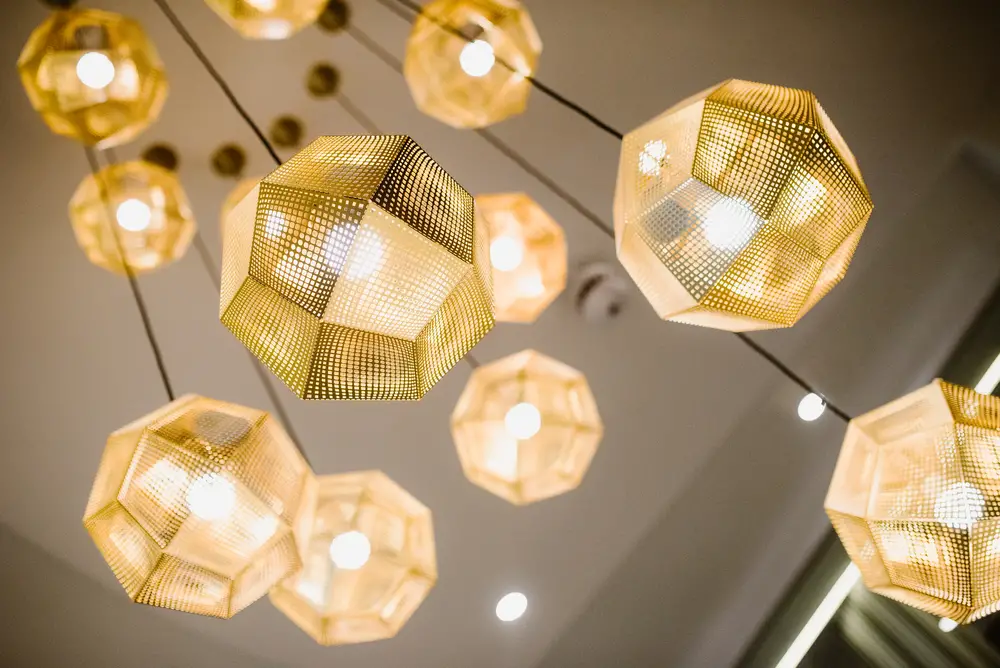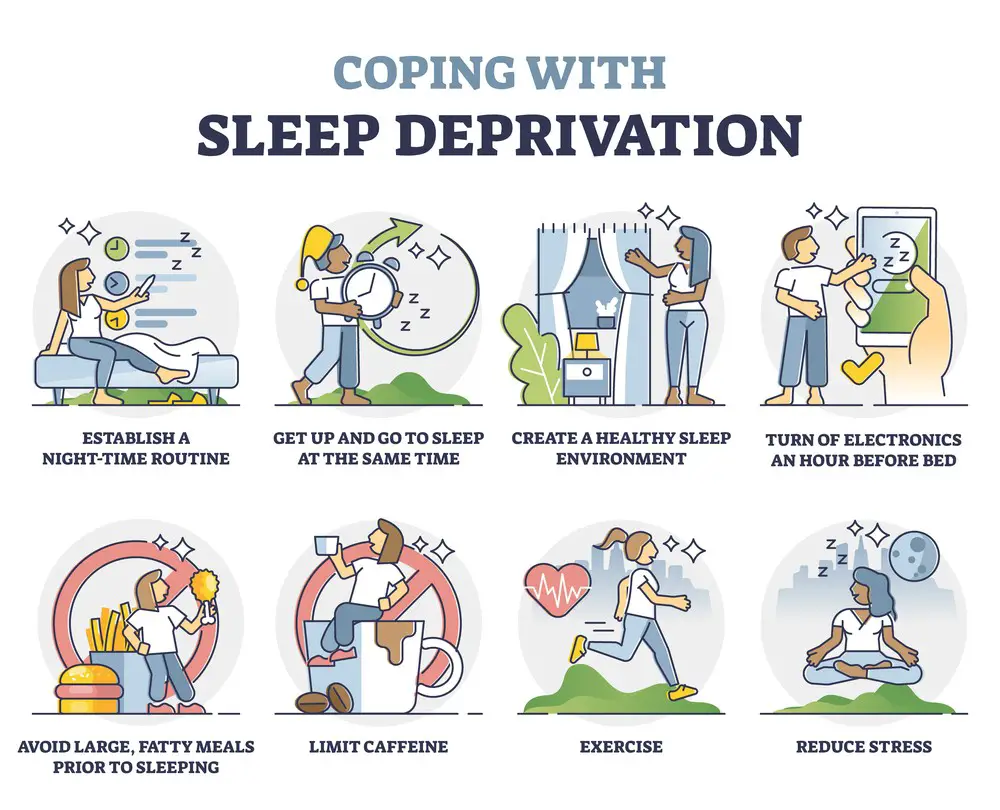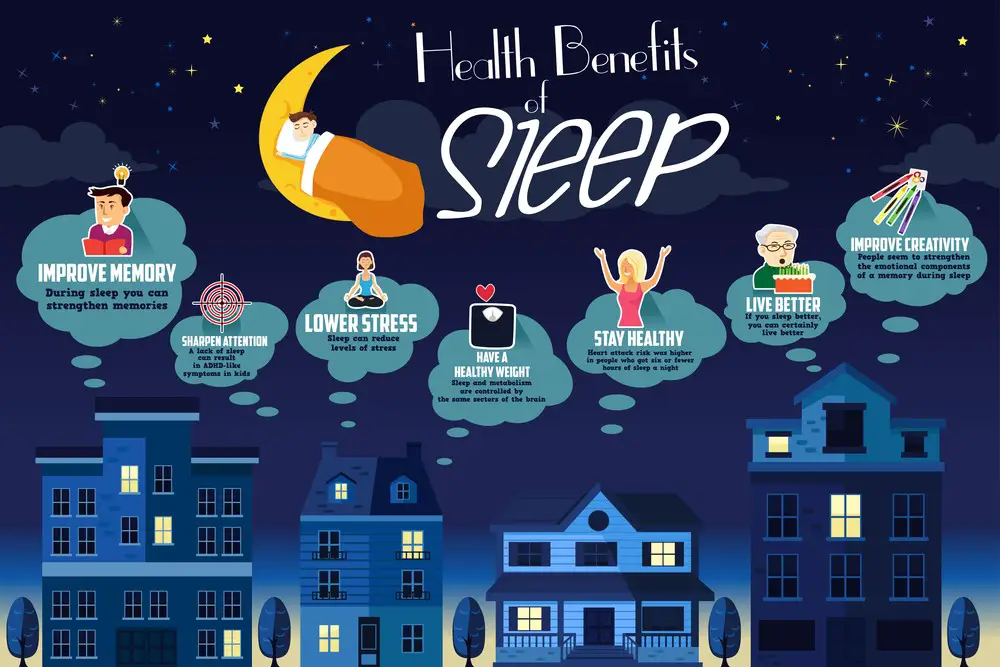As a BetterHelp affiliate, we receive compensation from BetterHelp if you purchase products or services through the links provided
The body’s natural sleep-wake cycle relies on the circadian rhythm, part of the body’s internal clock, which responds to the rhythm of of day and night. Several things can disrupt this cycle, including travel, work, and exposure to artificial light.
Light plays a vital role in improving sleep, but not all light. Sunlight and some light hues encourage melatonin production, while others will keep you awake.
Additionally, it’s best to sleep in a dark room, but lighting colors before sleeping can affect the quality of your sleep. If you need to sleep with light, warm-colored lights work best. What is the best color light for sleep?
Choosing the Right Sleep Lighting
A sleep physician, Dr. Pranshu Adavadkar, writes for the Sleep Foundation that it’s best to avoid blue color lights from electronic devices when preparing for bed because they disrupt the sleep-wake cycle by tricking the brain at night. Warm light hues are better for sleeping, but different colors can affect the body differently. Here’s the best color light for sleep:
Amber Light

Amber light is calming and improves the overall mood, making it ideal for better sleep. It also promotes melatonin secretion, which the blue light from smartphones, laptops, and TVs inhibits, disrupting your circadian rhythm. Use amber light to help you fall asleep easily since it mimics candlelight with its calming colors.
Red Light
If you want an even more calming light hue, use red light for those hours before bedtime. It makes it easier to fall asleep, and if you do wake up during the night, switching on a red light will not disrupt you, making it easier to fall asleep again. Studies have shown that the photosensitive cells in our eyes are most sensitive to the blue-green light emitted from light bulbs. These cells pick up different wavelengths of light and send them to the brain. Blue light alerts the brain in the same way as daylight, stopping melatonin secretion. Red light is very effective because it’s a relaxing color and removes all traces of green light that can disrupt sleep.
Creating a Sleep-Friendly Environment

Creating a sleep-friendly environment is crucial for ensuring restful and rejuvenating sleep. Here’s what you can do, including choosing the best light for sleep:
- Invest in a comfortable, good-quality mattress and pillows for support and proper body alignment.
- Make your bedroom dark at night by using blackout curtains or blinds.
- Use comfortable bedding and climate control to keep your bedroom temperature comfortable, typically between 60 to 67 degrees Fahrenheit (15 to 19 degrees Celsius).
- Minimize noise disturbances with earplugs, white noise, or a fan for consistent and soft background noise to mask other sounds.
- Reduce exposure to electronic devices like smartphones, tablets, and computers before bedtime.
- Create a relaxing routine at bedtime to prepare your body for winding down. These could include a warm bath, practicing relaxation, reading, etc.
- Keep your bedroom spotless and clutter-free to reduce stress and promote relaxation.
- Use essential oils known for their sleep-inducing qualities.
- Avoid consuming alcohol, caffeine, and heavy meals close to bedtime, as they can interfere with your ability to fall and stay asleep.
Understanding the Impact of Light on Sleep
Whether you’re a restless sleeper or a new parent, you’ll understand the value of getting a good night’s rest for your overall well-being. Understanding the impact of light on your sleep capacity is very important.
The best color light for sleep is a relaxing color like amber or red, and these are the main benefits of using them:
- Secretion of melatonin naturally
- Create a feeling of calm in the mind and relaxes the muscles
- Don’t interfere with your circadian rhythm
- Prevent insomnia
- Don’t disrupt your sleep should you wake up at night for a baby or to go to the bathroom
- Feeling more rested and alert on awakening
- Better and more restful sleep
However, it’s not enough to change the lightbulb in your bedroom to amber or red-colored light because some still emit blue or green light, even if it’s not visible to you. Specially designed lights for bedrooms only emit specific wavelengths of pure amber and red light, and not high-energy color light like blue and green.
The Role of Color in Sleep Quality
Bright and cool light hues affect sleep, encouraging alertness and attentiveness. They signal to the body that it’s time to wake up. When used at night, bright and cooler lights may make it difficult to fall asleep because they disrupt melatonin secretion and the circadian rhythm. Warm colors significantly affect sleep quality because they prepare the body and mind for sleep.
Therefore, choosing the best color light for better sleep quality means preferring amber, red, or yellow light hues. It’s best to avoid colder light after sundown.
Red Light
A dim red light has the most negligible effect on circadian rhythms, making it one of the best colors for light use at night. Research has shown that exposure to red light improves melatonin production and makes it easier to fall asleep.
Additionally, exposure to red light during sleep reduces the chances of feeling tired and disoriented in the morning (sleep inertia). However, if the red light is too bright, it might suppress melatonin production.
Amber and Yellow Light
Dim amber and yellow colored lights also have little impact on the circadian rhythm, making them an excellent option for nighttime use. Exposure to these hues may also increase melatonin production.
Blue Light
Many artificial lights and electronic screens emit blue light. If possible, put away electronic devices an hour and a half before bedtime or use blue-light-blocking glasses if you need to work. These have proven quite effective.
Green Light
Green light hues also decrease drowsiness by reducing melatonin levels, although not as fast as blue light, so avoid it before bedtime.
Optimal Light Colors for a Restful Sleep
When considering light colors for promoting restful sleep, it’s essential to focus on the color temperature of the light rather than the actual color itself – measured in Kelvin (K), with lower values representing warmer, softer light and higher values representing cooler, bluer light. Here are optimal light colors for restful sleep:
Warm White (2700K-3000K) – Warm white light, with a color temperature between 2700K and 3000K, mimics the soft, golden glow of candlelight or sunrise/sunset. This warm light is gentle on the eyes and promotes relaxation, signaling that it’s time to prepare for sleep by winding down.
Soft Yellow or Amber (2000K-2700K) – Light in the yellow to amber range, with a color temperature between 2000K and 2700K, creates a cozy and comforting atmosphere in the bedroom. These warm hues help reduce eye strain and melatonin disruption, facilitating a more restful sleep.
Red or Orange (1800K-2000K) – Red or orange-tinted lights emit a warm, gentle glow that promotes relaxation and improves sleep quality. These colors calm the mind and body, helping to reduce stress and anxiety before bedtime.
Dimmable Lights—Regardless of the color temperature, dimming your lights allows you to adjust the brightness according to your needs and preferences. Dimming as many lights as possible in the evening helps signal to your body that it’s time to prepare for sleep and promotes a relaxing bedtime routine.
Some smart lighting systems allow you to choose the color temperature and customize the light in your bedroom to match your sleep-wake cycle. You can program the lights to emit warmer, softer light in the evening and gradually transition to cooler, brighter light in the morning to simulate natural daylight and wakefulness.
Top Picks for Sleep-Inducing Lighting
Choosing appropriate sleep-inducing lighting will ensure that you get a good sleep. Evidence suggests that the best color light for sleep is red or amber. Here are some of the best sleeping bulbs and lights available from Block Blue Light:
- SweetDreams Sleep Lights are warm and amber for use throughout the house, especially in your bedroom. They are low EMF, won’t flicker, and emit zero blue light and zero flicker.
- The Twilight Red Light Bulb removes all the blue and green light spectrum. Because of its dimmer light, it is perfect for rooms you frequent a few hours before bedtime. These bulbs are also perfect for bedrooms because they are low in EMF and won’t flicker.
- For those who like to read, get the Amber Book Light. Its calming color promotes sleep while protecting your eyes from exposure to blue light.
- The NoBlue Amber Sleep Lamp is a larger version of the book light that provides more blue-free light.
- The Twilight Red Light Lamp blocks out all green and blue light, making it ideal for a good night’s sleep.
- If you wake up during the night, the Red Plugin Night Lights will give you enough light to get around without any blue and green light exposure.
Enhancing Sleep with the Right Colors

Light can enhance your sleep if you get the right color light at the right time. It’s a very simple process that you must follow.
Start the day by getting morning sunlight and continue to do the same throughout the day. Once evening comes, minimize your exposure to light by avoiding it as much as possible. As a rule, you should get as little light as possible from about 90 minutes before bedtime, especially green and blue light.
Switch to warm-colored light in the evenings to help you wind down and relax. Prefer hues like red, orange, and yellow while ensuring low Kelvins for warmer light without blue and green hues.
Improving Your Sleep with Lighting Choices
The lighting choices in your bedroom play a significant role in producing a sleep-friendly environment. Here are some suggestions for your lighting choices and the best color light for sleep.
- Prefer light bulbs with a warm color temperature rather than cooler, blue-toned lights. Warm lighting is less stimulating and helps promote relaxation.
- Install dimmer switches or use lamps with adjustable brightness levels, and dim the lights in the evening to remind your body it’s time to wind down.
- Place bedside lamps with soft, diffused lighting on either side of the bed for reading or winding down before sleep. Avoid bright, harsh overhead lighting in the bedroom, especially in the evening.
- Smart lighting gives you control of the brightness and color temperature of lights from your smartphone or voice commands.
- If you need some illumination during the night, choose low-intensity night lights with warm-colored bulbs, allowing you to navigate your bedroom safely without disrupting your sleep.
- Breaking the Silence: Why Men’s Mental Health Matters More Than Ever - April 15, 2025
- How to Transform a Home’s Patio Space into a Relaxing Space - March 23, 2025
- 5 Strategies to Use a Cell Phone to Help Manage Your Stress - March 23, 2025
This site contains affiliate links to products. We will receive a commission for purchases made through these links.



